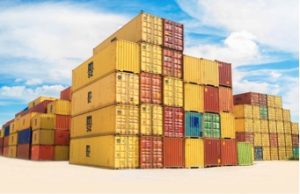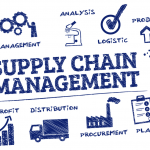Shippers Can Take Advantage of Falling Freight Rates This “Peak Season”

Shipping Containers Picture: https://unsplash.com/photos/tjX_sniNzgQ
Normally, freight rates increase this time of year during international shipping’s peak season when shippers are importing more goods than usual to stock up for the big holiday shopping season. However, “peak” is a very strong word for this season. It even seems the opposite of what’s happening right now. Instead of climbing freight rates, pricing on international shipping is falling right now.
This year’s weak peak season, if you still want to call it that, doesn’t really come as a surprise. Last year’s very bloated peak season and a series of shipping influxes from even before then to now in order to beat tariff hikes in the Sino-American trade war had shippers front-loading their imports from China. I wrote in Universal Cargo’s blog back in April, after last year’s engorged and prolonged peak season, that “transpacific cargo quantity could still be impacted as [2019] continues by all that cargo front-loading.”
2019’s transpacific cargo quantity certainly is being impacted, especially now, during the peak season. And shippers have the opportunity to take advantage of it.
Big Transpacific Freight Rate Drop
Hellenic Shipping News reported yesterday (September 30th, 2019):
Spot rates on the Freightos Baltic Daily Index (SONAR: FBXD.CNAW) for China-North America West Coast fell 8% from last week… Since the beginning of the year, container rates have dropped a full 34%, despite it being the middle of peak season.
The drop is even steeper compared to last year’s peak season, which saw the start of container front-loading from China ahead of tariff increases. September spot rates are now down 43% from a year earlier and down 14% from 2017.
These dropping freight rates make this a great time for shippers to import goods, especially if they’re importing from China and want to beat the next round of tariff hikes currently scheduled to hit December 15th.
However, it is not only transpacific rates from China to the U.S. that are unseasonably low right now.
Lower Rates Not Just for Transpacific
Mike Wackett reported in the Loadstar last week (on Wednesday, September 25th) that heavy freight rate drops are happening for not only USWC but also Europe:
According to Alphaliner, carriers are already touting heavily discounted rates, of below $500 per teu for Europe and 40ft rates of less than $1,100 for the US west coast.
Container spot rates, as recorded by the Shanghai Containerized Freight Index (SCFI), have fallen to a four-month low and are some 18% below the level of a year ago in a soft market weakened by trade wars and other macroeconomic concerns which have pushed supply-demand in container trades further out of kilter.
Trade War Not the Only Cause
The trade war with China obviously plays a big role in the slower than normal peak season we’re in with lower rates. However, the trade war is not the only thing causing freight rates to fall, as can be seen from Europe also seeing declining freight rates.
Last year, ocean carriers did a good job of limiting capacity to keep freight rates higher. For years, carriers have struggled with overcapacity, putting them on the wrong side of the supply vs. demand equation and creating downward pressure on rates.
Carriers are now losing grip on the control they showed over capacity in 2018. Despite carriers utilizing blank sailing, capacity looks to be heading for a steeper than healthy rise for the shipping lines.
The rest of the year looks better for shippers than carriers from reading Wackett’s Loadstar article:
[Alphaliner] warned that “further rate weakness” was expected for the remainder of the year, due to “ineffective” capacity management by container lines.
“While voiding sailings can be useful for dealing with seasonal short-term drops in cargo demand, it has proven ineffective as a sustainable strategy to cope with a structural decline in cargo volume growth,” said Alphaliner.Carriers now had “limited room” to remove ships for extended periods due to the considerable cost overheads of keeping ULCVs idle without earning revenue, it added.
The consultant also noted that there was a “steady stream” of newbuild tonnage due to be received by carriers in the coming months and that the scrapping of older ships remained at a low level.
Carriers Could Still Have Freight Rates Bounce Back
The most stable thing about international shipping’s freight rates is they’re always volatile. Falling freight rates right now do not mean there couldn’t be a quick rise in those shipping prices real soon. In fact, there are a couple factors that suggest Alphaliner may be wrong in their assessment of the rest of the year.
Alphaliner is right that voiding sailings is not a very sustainable strategy, but it can be effective for carriers in bursts. And carriers do have a whole burst of blank sailings or sailing cancellations coming up.
On top of shipping lines making a push to reduce capacity in the face of this weak peak season, demand may be about to make a jump before the December tariffs hike hits. That’s something we’ve seen again and again during this trade war with China.
The Hellenic Shipping News article says:
“Trans-Pacific pricing remains at the mercy of the trade tariff war,” Buchman said in a note. The most recent tariff change “carries less clout than predecessors due to the short, five week notice and the limited scope of goods affected.
“Given the weak peak season prices, carriers will be banking on post-Golden Week increases, as well as the December 15 tariff change, to shore up prices. With a significantly longer four month notice, there’s a better chance that this tariff increase will lead to increased shipping – and freight rates – come October and November.”
The downturn in the trans-Pacific trade is forcing lines to cut more sailings. U.K.-based PR News Service said the Ocean Alliance plans to cut up to seven sailings from between October 15 and December 2, 2019 in order to come up with the weak demand. This comes on top of the nine weekly sailings from Asia to the U.S. West Coast that were already cancelled due to the slowdown during China’s Golden Week celebration.
The latest round of voided sailings includes two, 8,830 TEU sailings for the Port of Long Beach at the end of November and start of December. Two weekly services into the Port of Los Angeles will also be cut in mid-December, one with 13,940 TEU in capacity and another with 6,680 TEU of capacity. A Seattle sailing of a 10,800-TEU capacity service will also be dropped in December. A 9,940 TEU service into Prince Rupert will blank a December sailing, as will a 5,580 TEU service in Vancouver.
Conclusion
Now is a good moment for shippers to take advantage of shipping rates and import goods. Many shippers got ahead of the holiday season by front-loading their importing during last year’s peak season that bled into the early part of this year. However, healthy American spending may have depleted that stock a bit.
There is some disagreement from the experts as to how freight rates will behave over the next couple months. However, volatility always remains a constant in the international shipping industry. As a rule of thumb, it’s always a good idea to import while the importing is good.
Of course, there are other options than importing from China. Universal Cargo can help you with it all, whether sourcing from a different country or sourcing and shipping domestically.




